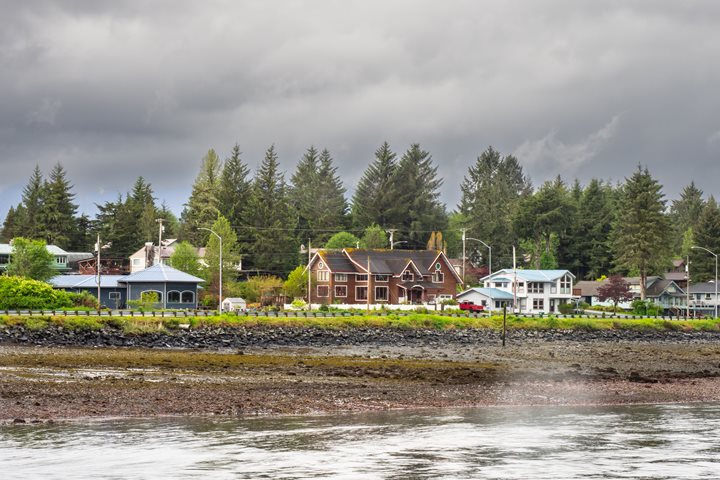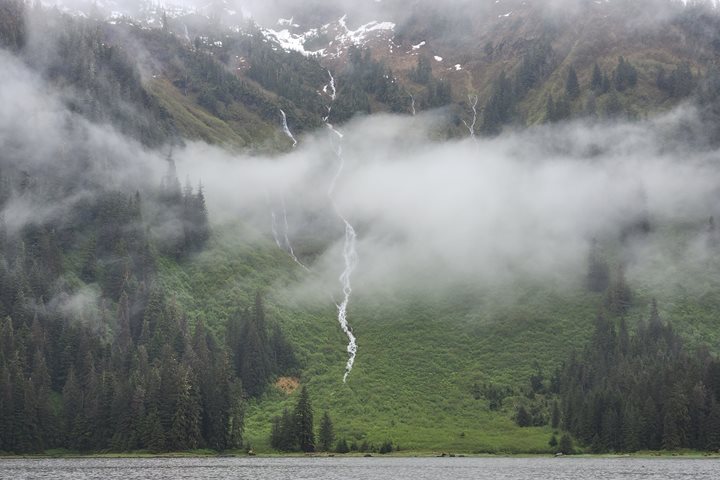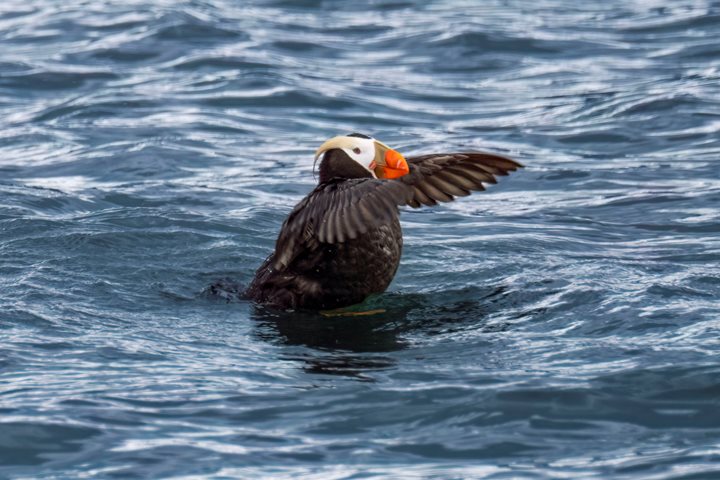It was a brisk, misty morning. Bald eagles, pigeon guillemots, and glaucous-winged gulls greeted our guests from the bow of the National Geographic Sea Lion in William’s Cove, just east of Tracy Arm, Alaska. After a safety briefing on the DIBs and bears, we prepared for an introductory hike in the temperate rainforest when a mama coastal brown bear and three cubs (first observed by a guest from the bridge) came wandering down the inner-tidal zone to be greeted by the clicking of cameras. Deciding enough was enough, she and her cubs wandered into the forest only to reappear 100 yards up-bay from us, whereupon the clicking cameras recorded the healthy cubs and mama bear on their way to the stream.
After the bears had safely passed, small groups of hikers ventured into the forest, learning about the successional sequence from goose tongue to Sitka Alder, salmonberry and fireweed to spruce and hemlock. Alder gave way to light-dependent Sitka spruce to diffuse light tolerant western hemlock. A quick introduction to “devil’s club” warned hikers to avoid skin contact with this raucous plant. Questions on succession gave way to the ecology of fungi and the need to recycle organic matter. Sphagnum moss and gilled mushrooms perforated the landscape, stimulating discussion on the role of the decomposers in the environment. A short hike to the orange-ish “chicken of the forest” spurred further conversations about the cycling of nutrients. Coming out of the forests, we were once again greeted by salmonberry, fireweed and yarrow.
The first group of hikers swapped places with kayakers who had explored the coastline and, near the stream’s entrance to the ocean, observed the same mama bear and three cubs, and a single fifth brown bear. Completing their respective one-hour explorations, guests and staff returned to the ship for lunch and a presentation on photography by Rich “Red Dog” Kirchner as we motored up-canyon to Sawyer Glacier of Tracy Arm.
Arriving at the ice flow of south Sawyer Glacier, guests were shuttled by DIBs to within ½ to ¼ mile from the face of the calving glacier. Naturalist interpretations covered basic facts related to retreating glaciers and thinning ice-fields and the probable driver of climate change. Guests were able to view both small and large calving, and experience the compression wave resulting from the collapsing ice wall and a large “shooter” rising from the submarine toe. Though the air was cold, spirits were high as we watch a phalarope dance on water and harbor seals bobble between the occasional collapse of ice columns.
Following another delectable dinner, guests viewed the movie “Petersburg: The Town Built by Fish” in anticipation of our visit to Petersburg tomorrow. The evening concluded with guests viewing humpback whales from the bow of the ship.









